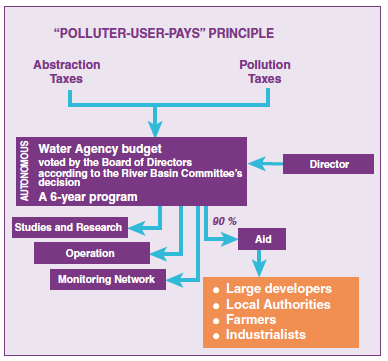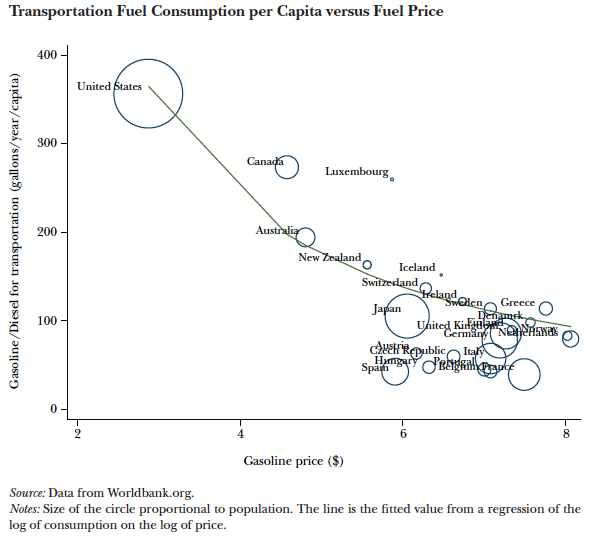I am going to talk about the sunny little island on the equator today (that is where I spent 15 years of my life in). Specifically, Singapore has very precious land space and high population density; hence, it is necessary for her to tackle the congestion externality on the road (time delay and extra fuel consumption).
Some data in 2011
| Land Area | 714.3km2 |
| Population | 5.184 million |
| Road | 3411km |
| Expressway | 161km |
Data Source: Department of Statistics, Singapore (www.singstat.gov.sg).
The policy
In 1998, Singapore introduced the Electronic Road Pricing (ERP) System. As the name suggests, it is an electronic toll system, which makes use of the pay-as-you-use principle. Basically, the motorists are billed when they travel on the roads during some busy times of a day.
The ERP rates are reviewed and calculated by a quarterly examination of traffic speeds of tolled roads and during the school breaks (June and December).
The rates are dependent on:
–Passenger Car Unit (PCU) equivalent
Cars, taxis and light goods vehicles = 1PCU
Motorcycles = 0.5PCU
Heavy goods vehicles and small buses =1.5 PCU
Very heavy vehicles and big buses = 2PCU
–The time of entrance to the bounded area
Toll prices change every thirty minutes according to traffic volume during peak hours. This methodology will lengthen the traffic flow time.
— The location of the ERP gantry
We can see from above that all vehicles are not exempted from the ERP. Only special vehicles such as the police cars, ambulances and fire engines are not subjected to the toll. Residents of Singapore are not subjected to any form of privilege too.
There are currently 80 ERP gantries located in the Central Business District (CBD), expressways and Outer Ring Roads and the Orchard Cordon. However, when ERP was first implemented on 1 September 1998, there were only 33 gantries. In addition, the number of gantries was 46 as of 1 August 2005. Hence, we can see that there is a stark increase in the number of ERP gantries and the quantity almost doubled as compared to ten years ago.
In February 2003, graduated electronic pricing was introduced to refrain motorists from speeding up or slowing down in order to pay less ERP charges. This is a very sound alteration of the policy because sudden changes of speed would either increase the probability of accidents or slow the traffic flow down. In addition, the graduated ERP is put forward in the relatively expensive bands and lower the ERP charges for commuters generally.
Effectiveness of the policy
Olszewski and Xie (2005) used a discrete choice based model to conclude that the ERP is an effective method to control congestion. The authors collected and examined traffic data before and after the initiation of toll on specific roads, and looked into discrete toll locations. They found out that cars are more responsive to ERP changes than other kinds of vehicle. They also mentioned that peak period road pricing would make other timings and other routes busy. However, it was explained that the above scenario was not as consequential as the horrible congestion existing before ERP. One thing to take note here is that this study is done in 2005 which means that the situation may have changed. The proliferation of ERP gantries in the recent years suggests that other roads in the city centre area (CBD) are getting congested too.
They then provided and analyzed empirical evidence on the impact of the variable pricing on the traffic flow in Singapore. Although there may be some methodological difficulties, it can be shown that the ERP effect on traffic volume can be measured.
This suggests that ERP is a success in terms of feasibility and functionality and could reduce the demand for commuting during peak hours and central areas. However, one drawback is that there is not cost-benefit analysis done for the program.
In addition, in terms of price variation, Santos (2007) stated that if road pricings change according to location, time and type of automobile, the toll scheme would reflect social cost more effectively. Hence, Singapore’s ERP system fulfils the criterion and account for the social costs of congestion very efficiently.
Distributional effects of the policy
The system is definitely not fair (Santos, 2007) because the poorer drivers pay the same amount as the better-off ones. In other words, ERP is regressive in nature. I think that regressive road pricing is very common and it is not feasible to charge different amount of tolls according to income levels. In addition, Santos (2007) stated that the regressive nature could be overcome by optimal usage of toll revenue. For example, the government could return part of the revenues to the low-income groups in a lump sum manner.
In Singapore, everyone knows that it is extremely to own a car. Hence, Santos (2007) claimed that congestion prices might be fair for the case of Singapore. Only the rich people could afford cars and by paying ERP, they are indirectly financing the public transport infrastructure. By doing so, the poor will benefit from the fast and efficient public transport.
In conclusion, I believe that the ERP system is very efficient for the toll is constantly and reliably changing according to location of the gantry, time and traffic condition. Although it maybe regressive in nature, the ERP is a success story as long as the government uses the toll revenues to expand road capacity or to improve the public transport system.
References:
Olszewski, P., & Xie, L. (2005). Modelling the effects of road pricing on traffic in singapore. Transportation Research Part A:Policy and Practice, 39(7-9), 755-772.
Santos, G. (2007). Urban congestion charging: A comparison between london and singapore. Transport Reviews: A Translational Transdisciplinary Journal, 25(5 ), 511-534.



